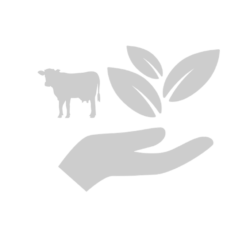The Long Way to High Quality Silage
Silage is one of the most important feeding for dairy animals – not only in the dry season, but also as a supplement for grazing animals. Good silage is high in energy, good in protein and helps to prevent rumen acidosis.
At Emjay Farming we are fully aware of our responsibility for our silage production – as it has direct impact on milk production and health of our animals as well as for the animals of our clients. We have 70 animals on our own farm and accordingly we know about the importance of good silage.
Continuous quality control of the soil is mandatory for us before we start planting the maize for the silage. Minor deficiencies are compensated by the right mixture of fertilizer while larger issues are treated by applying lime, manure, and other organic matters.
With highly mechanized processes we prepare the soil for planting. When it comes to planting maize for silage we put numerous additional aspects into consideration: What variety will we use, what is the right population per acre, what is the fertilizer demand, how do we avoid diseases and damages by insects, how do we keep the land free of weed. There is no blue print for these decision – it requires analysis, testing and a lot of experience. This all with one intention: Producing the best quality of silage for our clients.
Precision Planting Leads to High Quality Maize
Our 8-row precision planter ensures precise planting in order to get equal stands so that the plants don´t have to fight for water and nutrition. The climatic conditions in TransNzoia with sustainable rainfall and the right temperatures have made TransNzoia famous for being the area for the production of the best quality in maize and silage, considered as the corn chamber of Kenya. And that´s where your silage comes from.
Harvesting
The maize is harvested when it is mature, but the corn is still in milky stage. This is of importance to ensure that the fermentation process can start immediately after harvesting. And this also requires a professional silage harvester to achieve the best results. It´s not just about cutting the plants – the corn must be cracked during the harvesting process. A corn that is not cracked will not ferment; the animals will eat the corn – but it will not be digested.
Good compacting of the silage avoids that oxygen damages the silage. We do this with our 7.500kg tractor. After compacting the pit will be closed within 24 hours. Drainages are built all around the pit to ensure that no water can get inside. Good compacted and closed silage pits the silage can last for 3 years or more without loosing quality.
The Silage
Depending on the DM (Dry Matter) content the fermentation process takes between 4 and 8 weeks. At the end of the process the silage is cool, has a little bit the smell of tobacco and you should hardly find any corn that has not been cracked.
Before the silage is sold it undergoes a strict analysis for quality assurance. The Dry Matter should be between 30% and 35%, the energy more than 10 MJ/kg and the protein level more than 9%.
Packaging
Depending on the demand of our clients the silage is baled and wrapped either in small bales of 60-80 kg or in large bales of about 350-365 kg/bale. During this process, the pit is opened, but the silage will be recompacted and baled within hours to avoid any damage. When you decide for the size of the bales keep in mind that once a bale has been opened it must either be closed again or must be used in less than 3 days. Otherwise, the silage will start rotting under the impact of the air.
Animals and their production rely on the best feeding.
We at Emjay Farming put all our knowledge and efforts in the process to produce the best possible silage. Our aim is to support the farming with healthy and well producing animals.
